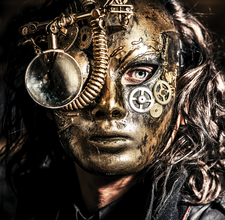Audio Builders Workshop Teaches Soldering Basics
Open Hardware – DIY Soldering Kits

© Lead Image © Andrey Kiselev, 123RF.com
When it comes to DIY maker projects, if you don't know how to solder, your options are limited. Audio Builders Workshop remedies this with two kits, plus workshops, to give you hands on soldering experience.
In the maker movement, the ability to solder is one of the great dividing lines – rather like compiling your own kernel in Linux programming. Just as a programmer who has not compiled a kernel is often limited, unless you know how to solder, the work you can do is limited, as well as the do-it-yourself (DIY) kits you can assemble. To help bridge this divide, Audio Builders Workshop (ABW) [1] has developed two kits to teach soldering basics: a metronome that emits a regular number of beats per minute to mark the musical frequency of sound, and a low pass filter that controls sound levels. Armed with these kits, ABW has held soldering workshops around Boston. In the last year or so, it has also started making the kit available to other interested groups and holding workshops from Anaheim to Frankfurt.
ABW is a special interest group of musicians, educators, and tinkerers in the Boston chapter of the Audio Engineering Society (AES), sponsored by Analog Devices, Inc. and Mouser Electronics. ABW was founded by Owen Curtain, who explains, "I held the first Audio Builders Workshop as a way to learn more about product development. When 50 people showed, I decided to continue with more events. Within a year, we had held lectures on operational amps, a Compressor Hackathon, and a DSP lecture series. With small groups, we also built microphones, DI boxes, and microphone preamps." This work is carried on by a small group of regulars plus volunteers recruited for specific events.
Brewster LaMacchia, a core ABW participant, notes that the group has "been focused on DIY rather than specific open source thinking. While the source of the hardware is there, I don't think there's an open hardware license on most of the commercial DIY company offerings." However, for all practical purposes and by any definition, the kits can be described as open hardware even without the formality of a license. Moreover, the build instructions are released under a Creative Commons Attribution-ShareAlike 4.0 International (CC BY-SA 4.0) license.
[...]
Buy this article as PDF
(incl. VAT)
Buy Linux Magazine
Subscribe to our Linux Newsletters
Find Linux and Open Source Jobs
Subscribe to our ADMIN Newsletters
Support Our Work
Linux Magazine content is made possible with support from readers like you. Please consider contributing when you’ve found an article to be beneficial.

News
-
Parrot OS Switches to KDE Plasma Desktop
Yet another distro is making the move to the KDE Plasma desktop.
-
TUXEDO Announces Gemini 17
TUXEDO Computers has released the fourth generation of its Gemini laptop with plenty of updates.
-
Two New Distros Adopt Enlightenment
MX Moksha and AV Linux 25 join ranks with Bodhi Linux and embrace the Enlightenment desktop.
-
Solus Linux 4.8 Removes Python 2
Solus Linux 4.8 has been released with the latest Linux kernel, updated desktops, and a key removal.
-
Zorin OS 18 Hits over a Million Downloads
If you doubt Linux isn't gaining popularity, you only have to look at Zorin OS's download numbers.
-
TUXEDO Computers Scraps Snapdragon X1E-Based Laptop
Due to issues with a Snapdragon CPU, TUXEDO Computers has cancelled its plans to release a laptop based on this elite hardware.
-
Debian Unleashes Debian Libre Live
Debian Libre Live keeps your machine free of proprietary software.
-
Valve Announces Pending Release of Steam Machine
Shout it to the heavens: Steam Machine, powered by Linux, is set to arrive in 2026.
-
Happy Birthday, ADMIN Magazine!
ADMIN is celebrating its 15th anniversary with issue #90.
-
Another Linux Malware Discovered
Russian hackers use Hyper-V to hide malware within Linux virtual machines.

